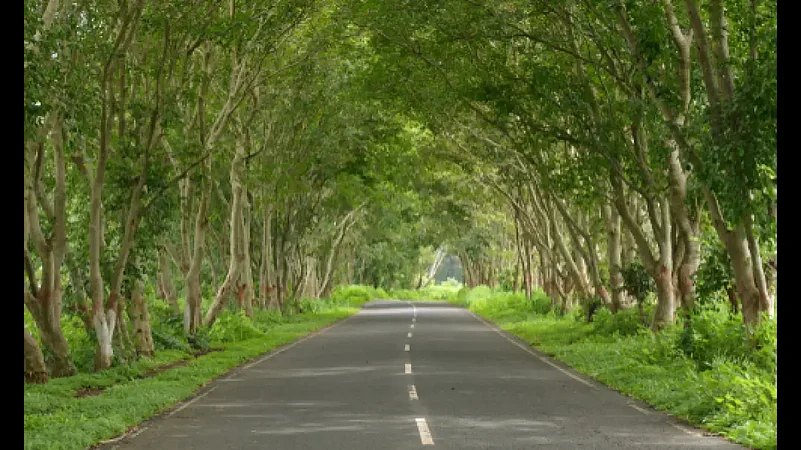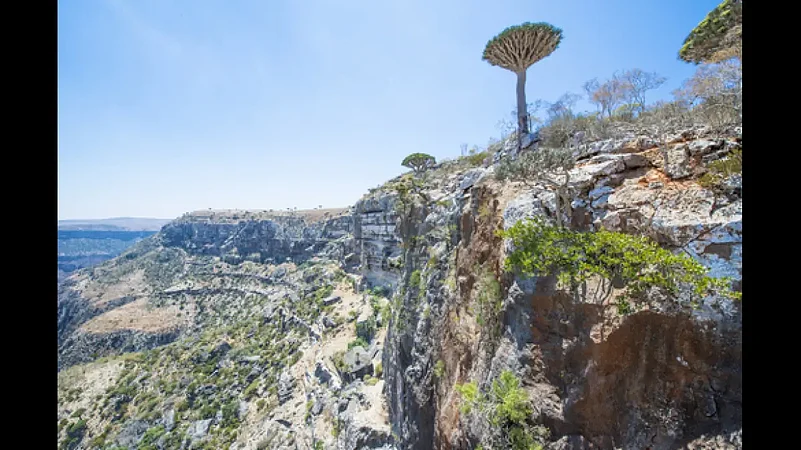Biosphere reserves not only provide refuge to diverse flora and fauna but also ensure reconciliation between biodiversity and sustainable use. According to UNESCO, these reserves are ‘sites for testing interdisciplinary approaches to understanding and managing changes and interactions between social and ecological systems, including conflict prevention and management of biodiversity’.
The World Network of Biosphere Reserves under UNESCO’s Man and Biosphere (MAB) Programme, according to latest reports, includes 727 biosphere reserves in 131 countries, including 22 transboundary sites. We bring you some of the best and most interesting natural wonders which can go into your travel bucket list.
Achanakmar-Amarkantak Biosphere Reserve, India

Inscribed as a UNESCO biosphere reserve (BR) in 2012, it is considered one of the less developed and thus least disturbed ecologically diverse landscape in central India. Spread over the contiguous states of Chhattisgarh and Madhya Pradesh, its topography ranges from hills to shallow valleys and plains. Apart from containing endemic and rare floral species, it is home to 67 threatened faunal species (according to IUCN list, 2001), including four horned Indian antelope, Indian wild dog, Asian White-backed Vulture, etc.
National Bavarian Forest Park, Germany
Established as Germany’s first national park in 1970, it was inscribed as a BR in 1981. Consisting of mountains, bogs, old forests and rejuvenated commercial forests, it is now home to many extinct species of animals. The motto of the park is ‘let nature be nature’; hence there is minimum interference. This German national park and its neighbouring Šumava National Park (Bohemian Forest; inscribed as BR in 1990) of the Czech Republic together form the largest contiguous forest in central Europe and are said to be home to several animal species which have disappeared from rest of central Europe.
Cinturón Andino Biosphere Reserve, Colombia
Consisting of three national parks - Cueva de los Guacharos, Purace and Nevado del Huila - this BR is located in the Andean mountain range. Consisting of diverse geological features, ranging from snow-capped mountains to volcanic zones to cloud forests to high barren plains to lagoons and waterfalls, it was inscribed in 1979. The BR is known for its bird population, especially the Condor vulture and the real eagle.
Galapagos Biosphere Reserve, Ecuador

Formerly known as Archipiélago de Colón (and inscribed as a BR in 1984), it got renamed following its expansion. One of the largest protected marine areas in the world, it also got inscribed on the UNESCO World Heritage List for its endemic flora and fauna.
Isle of Wight Biosphere Reserve, UK
Inscribed in 2019, this BR is located in an island considered to be the second most populous island in northern Europe. However, according to the UNESCO, the island enjoys a strong tradition of environmental action and awareness programmes.
Lapland Nature Reserve, Russia
Home to the Sami people, also referred to as Laps or Laplanders in English, this ‘zapovednik’ (strict nature reserve) was recognised as a BR in 1985. Located in Murmansk Oblast, just above the Arctic Circle, it largely consists of mountain tundra and lakes. However, this BR is open mostly for scientific studies and general visitors are allowed only on specified eco-routes.
Kobushi Biosphere Reserve, Japan
Largely spread across Japan’s Kanto Mountains, this BR inscribed in 2019 is home to nearly 40 per cent (including some endangered species) of Japan’s recorded butterfly species, according to UNESCO. The main Okuchibichu ridge within the park is a source of major rivers. Some of the peaks of the ridge are worshipped by the local people and hence tree felling is banned.
Lubombo Biosphere Reserve, Eswatini
Located across the Lubombo Mountain Range this BR is located in the country which was earlier known as Swaziland. It is also part of the Maputoland-Phondoland-Albany Biodiversity Hotspot. It mostly consists of forests, wetlands and savannah. According to a UNESCO, 20 of the 88 mammals found here are unique to the region.
Organ Pipe Cactus National Monument, US
This interesting sounding BR in southwestern Arizona, a national monument, was designated a biosphere reserve in 1976 by UNESCO. Branches of this cactus look like organ pipes and hence the name. Apparently this cactus is only found in the US and in this particular area of the Sonoran Desert. Visitors can take a a scenic drive, a wilderness hike or enjoy night camping to enjoy the thriving desert.
Picos de Europa National Park, Spain
Tucked inside northern Spain’s Picos de Europa mountain range, it was created way back in 1918 and expanded later on. It earned its BR tag in 2003. Its most prized wildlife is the Cantabrian chamois or the Rebeco. The park is home to several other protected animal species, including the Cantabrian capercaillie of the grouse family, bearded vulture, Cantabrian brown bear, Spanish ibex, etc.
Socotra Archipelago, Yemen

Located off the famous Horn of Africa, it was inscribed as a BR in 2003. Until the 1970s, the region was largely isolated from the rest of the world and therefore managed to retain much of its biodiversity along with its cultural heritage. One of its famous endemic floral species is the Dragon Blood Tree, native to the archipelago.
Yeoncheon Imjin River Biosphere Reserve, Republic of Korea
Spread across the Yeoncheon and the Imjin river basins, this 2019 inscribed BR consists of sprawling forests and cultural heritage protection zones. The habitat, consisting of rivers, swamps and wetlands, are home to a large number of wildlife, from water spider to endemic fish to otters to cranes and eagles, etc.
















